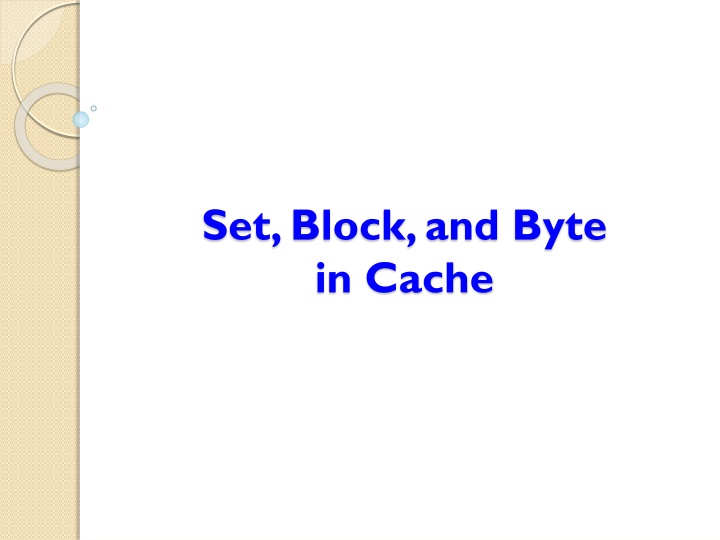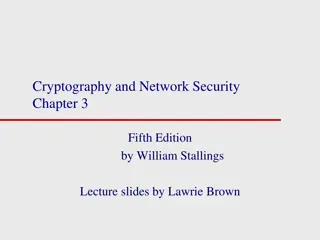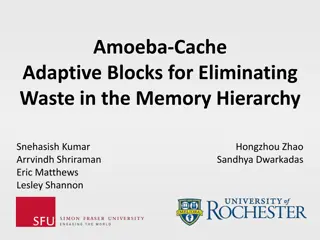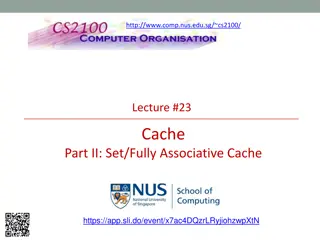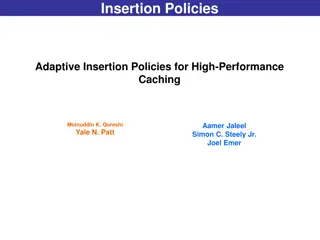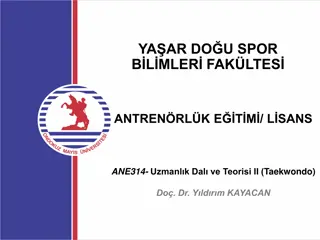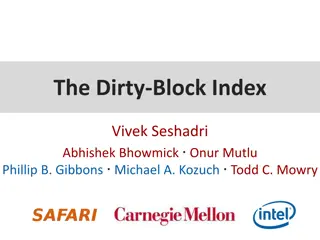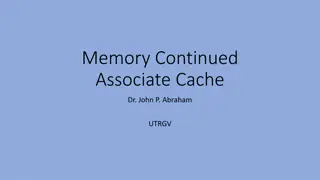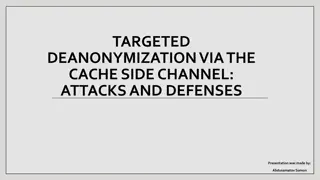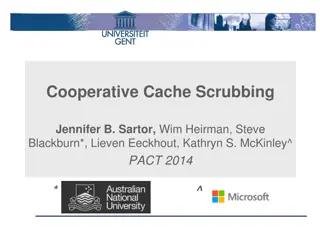Set, Block, and Byte in Cache
Learn about set, block, and byte in the cache to optimize memory utilization. Explore how data is placed within cache blocks using block addresses and indices. Understand the principles of spatial locality and associative cache mapping for efficient data retrieval.
Download Presentation

Please find below an Image/Link to download the presentation.
The content on the website is provided AS IS for your information and personal use only. It may not be sold, licensed, or shared on other websites without obtaining consent from the author.If you encounter any issues during the download, it is possible that the publisher has removed the file from their server.
You are allowed to download the files provided on this website for personal or commercial use, subject to the condition that they are used lawfully. All files are the property of their respective owners.
The content on the website is provided AS IS for your information and personal use only. It may not be sold, licensed, or shared on other websites without obtaining consent from the author.
E N D
Presentation Transcript
Set, Block, and Byte in Cache
Block and Byte Goal: take advantage of spatial locality. Organize memory and cache in blocks Each block contains multiple bytes So how to figure out where data should be placed in the cache? We use block address and block index. Byte Address Block Address 0000 0001 0010 0011 0100 0101 0110 0111 1000 1001 1010 1011 1100 1101 1110 1111 000 001 Block Index 010 00 01 10 11 011 100 101 110 111
Locating block and byte in the cache Assume a cache with 2kblocks, each containing 2nbytes. For a byte of data, we utilize its address in main memory to locate its position in cache -- k bits of the block index selects one of the 2kcache blocks. --The lowest n bits are now a block offset that decides which of the 2nbytes in the cache block will store the data. (m-k-n) bits k bits Block Index n-bit Block Offset m-bit Address Tag block address: (m-n) bits Prior example used a 22-block cache with 21bytes per block. Thus, memory address 13 (1101) would be stored in byte 1 of cache block 2. 1 bit 2 bits 1-bit Block Offset 4-bit Address 1 10 1
Example Tag Index (2 bits) Address (4 bits) 1 10 1 Block offset 2 Index Valid Tag Data 0 1 2 3 8 8 = Mux 8 Hit Data
Set and Block In a set-associative cache --The cache is divided into groups of blocks, called sets. -- Each memory address maps to exactly one set in the cache, but data may be placed in any block within that set. If each set has 2xblocks, cache is an 2x-way associative cache. Several possible organizations of an eight-block cache. 2-way associativity 4 sets, 2 blocks each 4-way associativity 2 sets, 4 blocks each 1-way associativity 8 sets, 1 block each Set Set Set 0 1 2 3 4 5 6 7 0 0 1 2 1 3
Locating a set associative block How to determine where a memory address belongs in an associative cache? If a cache has 2ssets and each block has 2nbytes, the memory address can be partitioned as follows. t=(m-s-n) s n Block offset Address (m bits) Tag Set Index block address: (m-n) bits Block Offset= Memory Address mod 2n Block Address = Memory Address / 2n Set Index = Block Address mod 2s
Generality of set associative 1-way set associative cache is the same as a direct- mapped cache. If a cache has 2kblocks, a 2k-way set associative cache would be the same as fully-associative cache. x = k - s 8-way 1 set, 8 blocks 1-way 8 sets, 1 block each 2-way 4 sets, 4-way 2 sets, 2 blocks each 4 blocks each Set Set Set Set 0 1 2 3 4 5 6 7 0 0 1 0 2 1 3 direct mapped fully associative
1-Way Set-Associative Cache Byte Address Block Address 0000 0001 0010 0011 0100 0101 0110 0111 1000 1001 1010 1011 1100 1101 1110 1111 000 Set 001 Block Index 010 00 01 10 11 011 100 101 110 111
2-Way Set-Associative Cache t=(m-s-n) s n Block offset Address (m bits) Tag Set Index block address: (m-n) bits Byte Address Block Address 0000 0001 0010 0011 0100 0101 0110 0111 1000 1001 1010 1011 1100 1101 1110 1111 000 001 Set Index 010 0 011 100 1 101 110 111
2-Way Set-Associative Cache Block Offset Tag Set Index 0 1 11 n t s Tag Data Block 10 Tag Data Block 11 V V t Data Word or Byte = = HIT
Fully Associative Cache Byte Address Block Address 0000 0001 0010 0011 0100 0101 0110 0111 1000 1001 1010 1011 1100 1101 1110 1111 000 001 010 011 100 101 110 111
Fully Associative Cache V Tag 110 Data Block t = 110 Tag 010 t = HIT 100 Offset Block Data Word or Byte 1 = n
Course Evaluation Incentive I will reveal one question of the final exam (5-10 points) as an incentive, if (and when) the response rate of the course evaluation reaches 80% !!! https://sunyub.smartevals.com/
Thank You! Thank You!
